
Explosive Sintered Titanium
A sample of explosive-sintered titanium from Nobel’s Explosives, Ayrshire. Titanium powder was placed in a container, wrapped with explosive cord, and detonated. The shock wave compressed the powder into a solid.

A sample of explosive-sintered titanium from Nobel’s Explosives, Ayrshire. Titanium powder was placed in a container, wrapped with explosive cord, and detonated. The shock wave compressed the powder into a solid.

A little spring-loaded folding seat made in Glasgow. This kind of seat was often used by elevator operators.
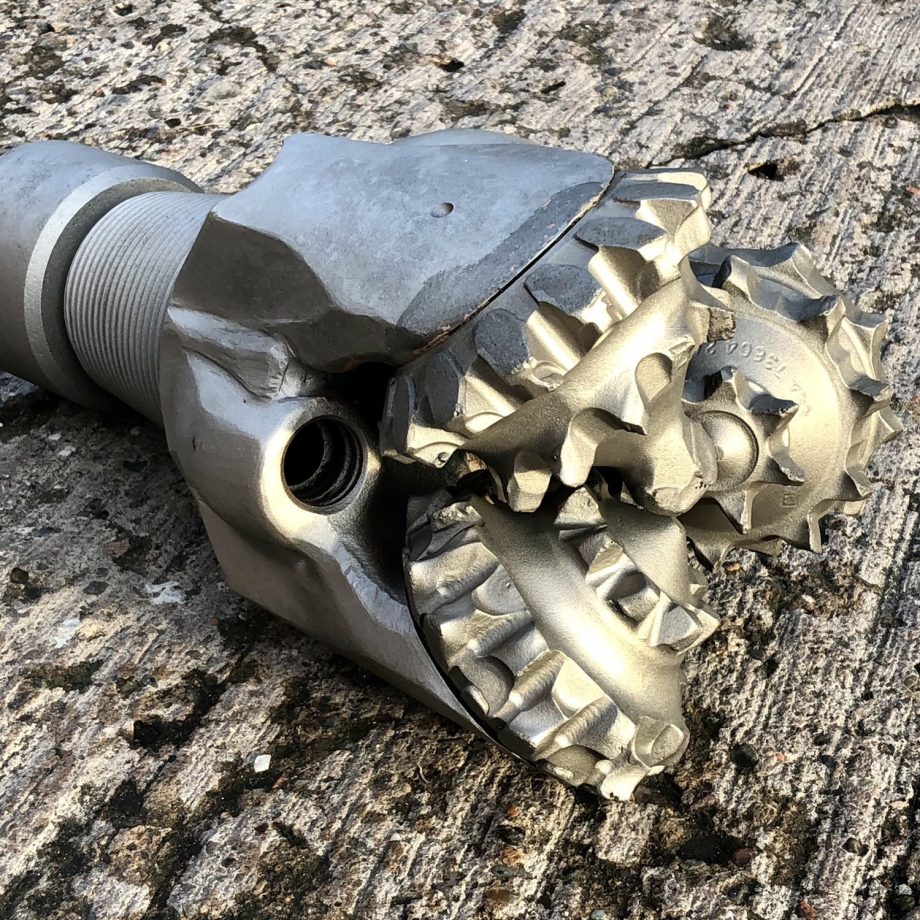
A rock drilling head from a North Sea oil rig. The three hardened steel cones have hard teeth that chew up the rock, and it is then flushed away by water pumped through the head.
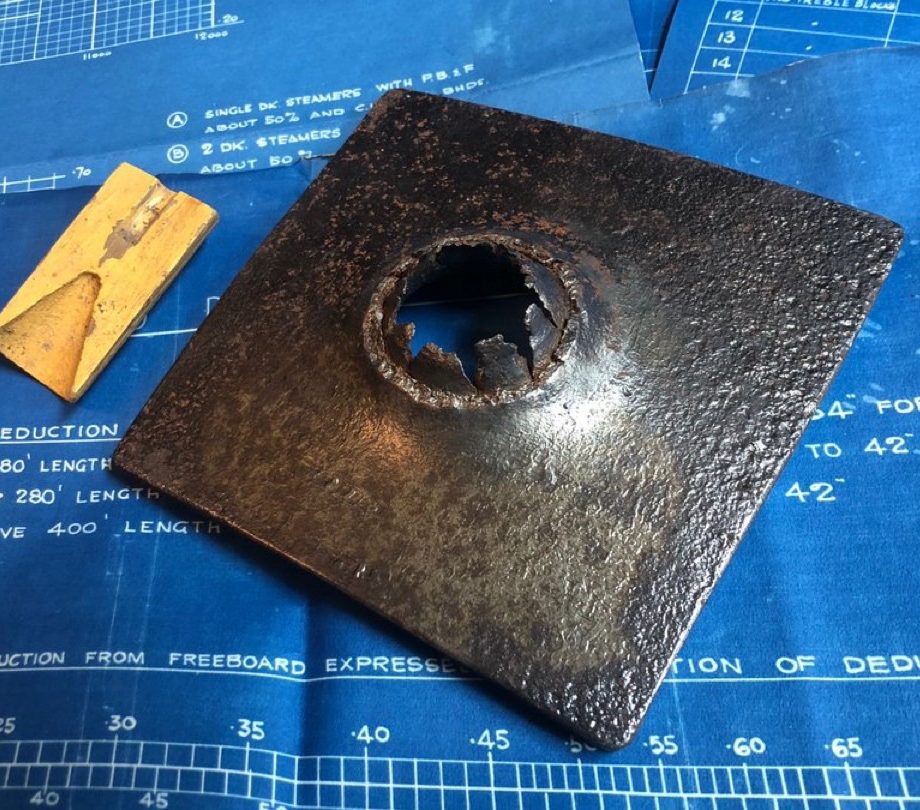
A wooden model shaped-charge explosive, and a steel plate pierced by a similar (real) charge, both from Nobel’s Explosives.
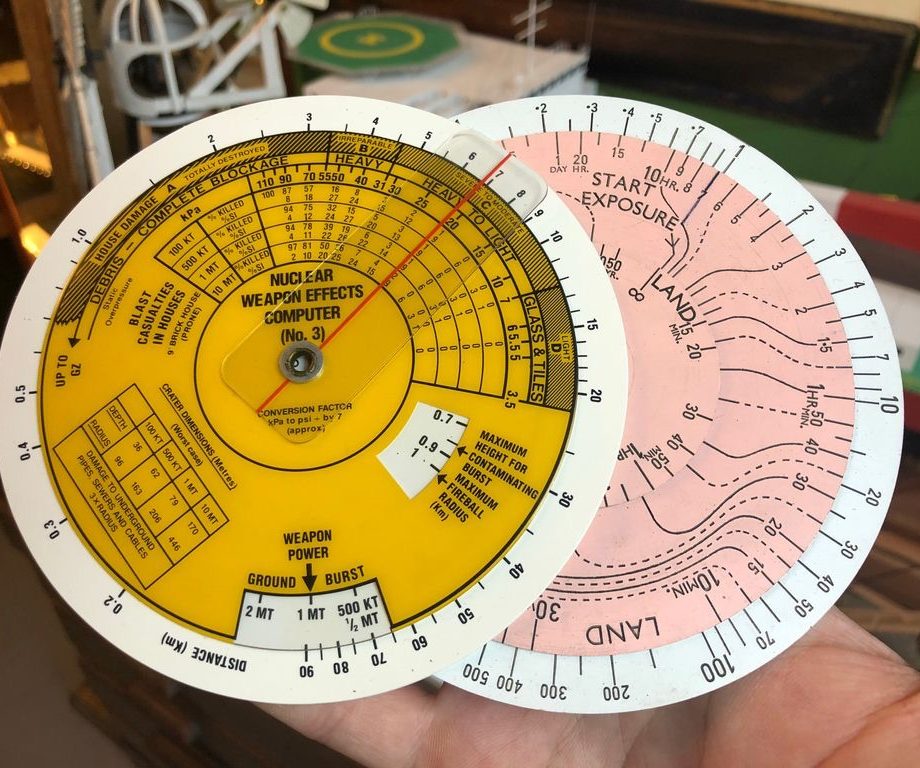
A couple of circular slide rule calculators, used to work out the damage, casualties and exposure effects from nuclear weapons. Dating from the 1960s, these were probably used by the Royal Observer Corps.
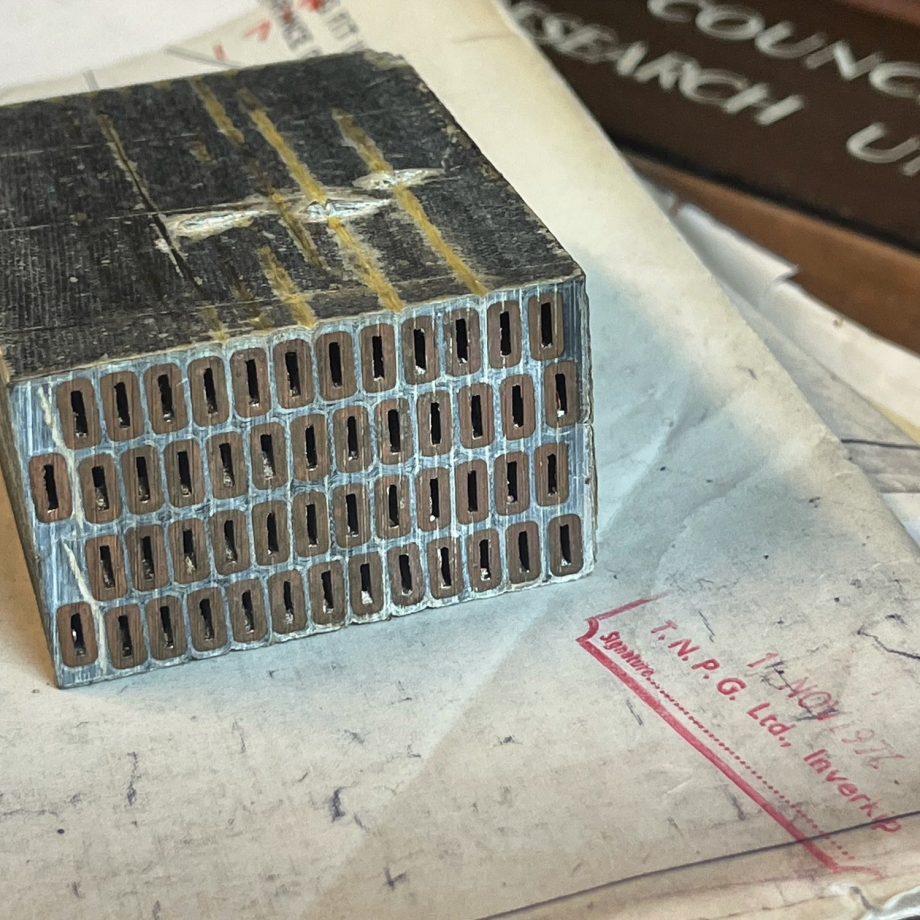
A section of electrical conductor (“busbar”) from inside a 650MW steam turbine from a power station. Earlier conductors were solid copper, these more sophisticated ones are water-cooled through those little channels. The conductors were also cleverly arranged so they were all the same length as the buster went around corners. Many thanks to Alan Rich […]
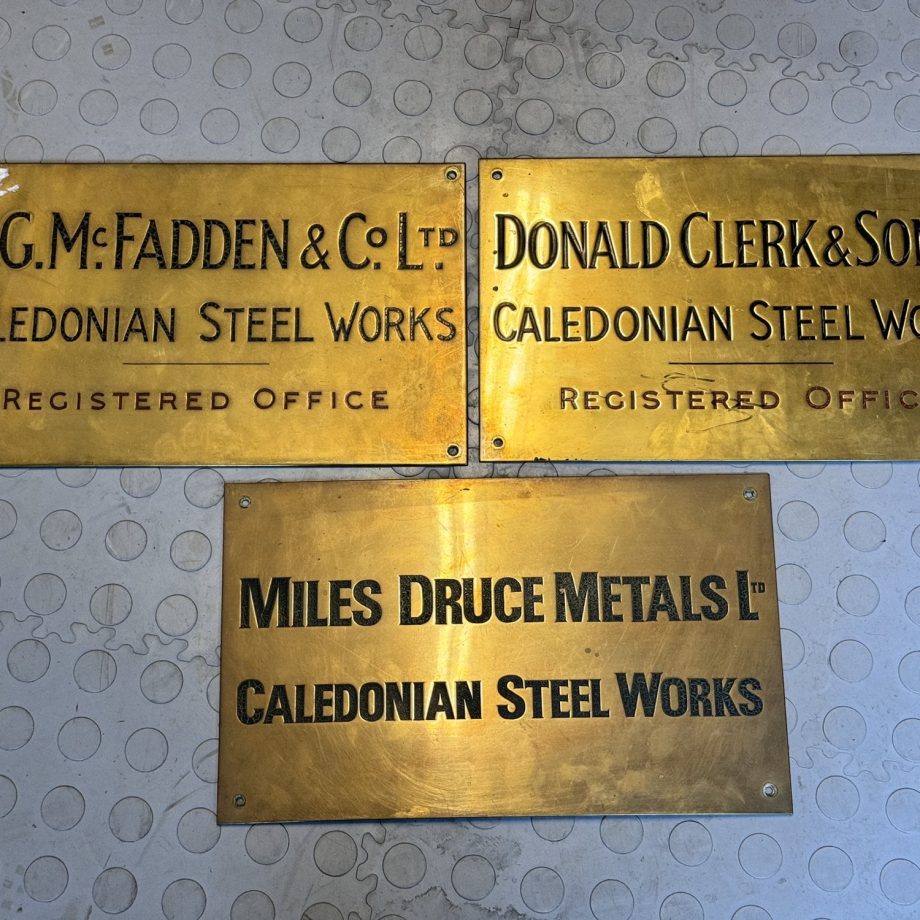
Three brass nameplates from the offices of the Caledonian Steel Works, charting the changes of ownership from Donald Clerk & Son to A G McFadden to Miles Druce.
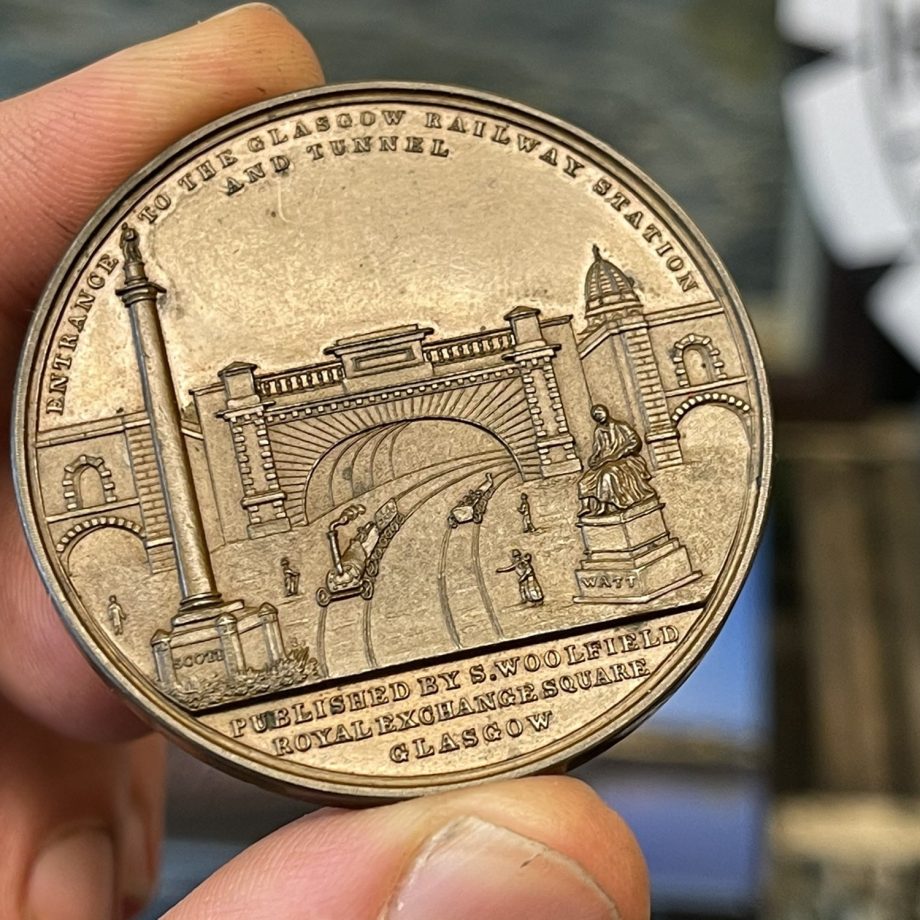
A copper medal celebrating the opening of Edinburgh and Glasgow railway in 1842. On one side, what’s now Queen St Station, on the other the viaduct over the Almond, designed by Robert Telford.

A promotional paint tin opener from Craig & Rose, the Scottish company that made the iconic red oxide paint for the Forth Bridge.
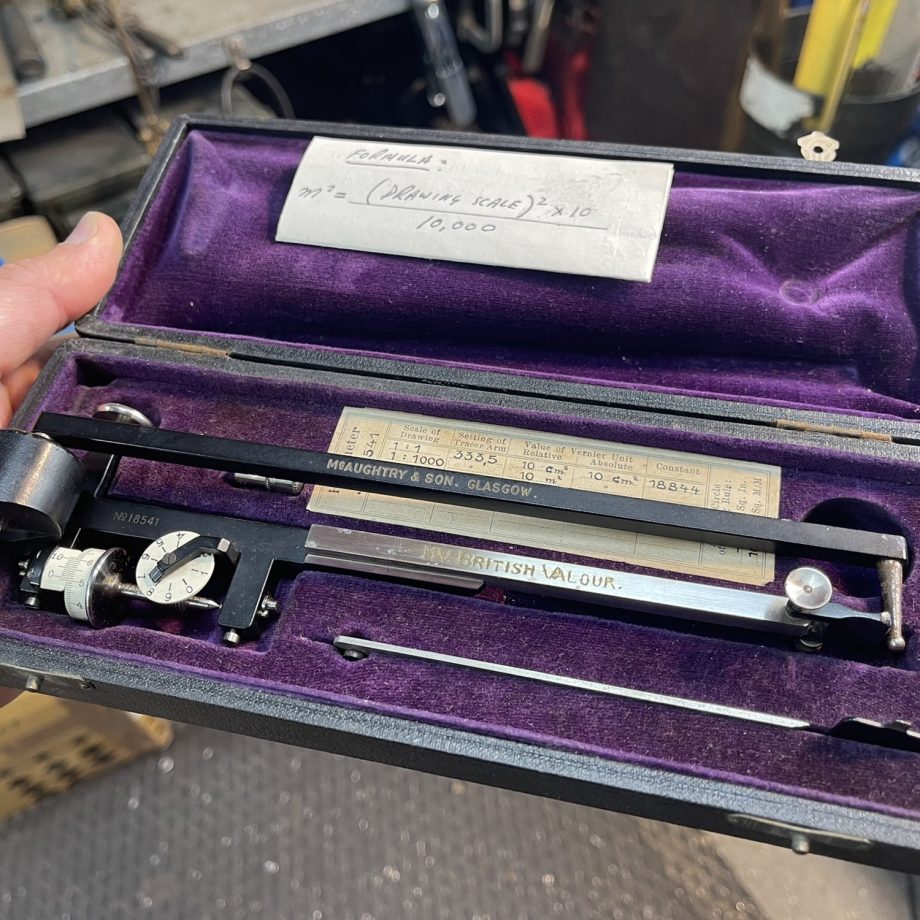
A planimeter made in Glasgow by McAughtry & Son, engraved with the name of the MV British Valour, an oil tanker launched in 1927 by Lithgows in Port Glasgow. A planimeter would be used onboard a ship to calculate engine power – it can measure the area under a curved graph.

A 1980 mixed-media painting of a North Sea oil rig by the artist Peter Sumpter, who died in 2020.